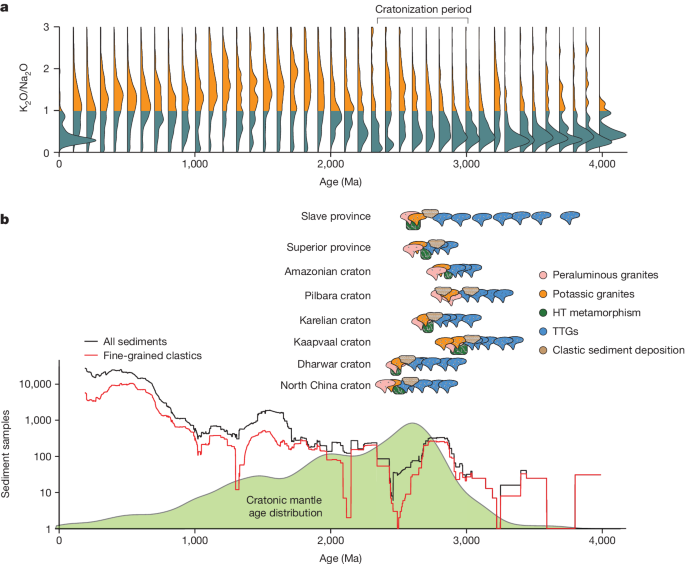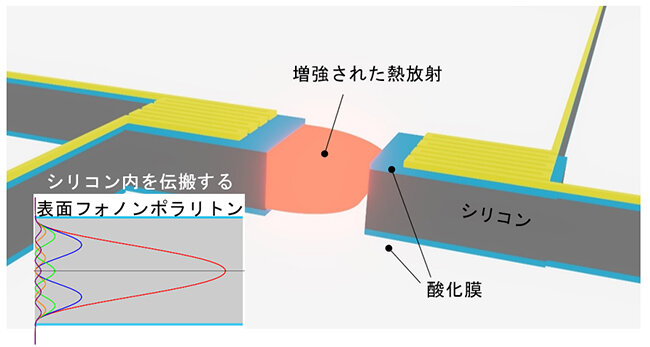2024-05-08 ペンシルベニア州立大学(PennState)
<関連情報>
- https://www.psu.edu/news/research/story/rock-steady-study-reveals-new-mechanism-explain-how-continents-stabilized/
- https://www.nature.com/articles/s41586-024-07307-1
海底風化が大陸の安定化を促進した Subaerial weathering drove stabilization of continents
Jesse R. Reimink & Andrew J. Smye
Nature Published:08 May 2024
DOI:https://doi.org/10.1038/s41586-024-07307-1

Abstract
Earth’s silica-rich continental crust is unique among the terrestrial planets and is critical for planetary habitability. Cratons represent the most imperishable continental fragments and form about 50% of the continental crust of the Earth, yet the mechanisms responsible for craton stabilization remain enigmatic1. Large tracts of strongly differentiated crust formed between 3 and 2.5 billion years ago, during the late Mesoarchaean and Neoarchaean time periods2. This crust contains abundant granitoid rocks with elevated concentrations of U, Th and K; the formation of these igneous rocks represents the final stage of stabilization of the continental crust2,3. Here, we show that subaerial weathering, triggered by the emergence of continental landmasses above sea level, facilitated intracrustal melting and the generation of peraluminous granitoid magmas. This resulted in reorganization of the compositional architecture of continental crust in the Neoarchaean period. Subaerial weathering concentrated heat-producing elements into terrigenous sediments that were incorporated into the deep crust, where they drove crustal melting and the chemical stratification required to stabilize the cratonic lithosphere. The chain of causality between subaerial weathering and the final differentiation of Earth’s crust implies that craton stabilization was an inevitable consequence of continental emergence. Generation of sedimentary rocks enriched in heat-producing elements, at a time in the history of the Earth when the rate of radiogenic heat production was on average twice the present-day rate, resolves a long-standing question of why many cratons were stabilized in the Neoarchaean period.



